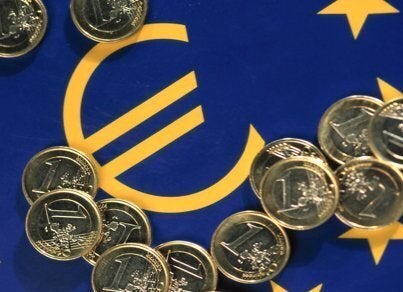
As international negotiators meet in the Chinese port of Tianjin for the final preparatory talks before next month's UN Climate Change Conference in Mexico, a remarkable debate is brewing in Europe. Governments and businesses are posing a radical question: should the European Union simply ignore the international climate change negotiations and move towards a low carbon economy regardless?
The very idea that Europe might unilaterally push ahead of other countries in reducing its greenhouse emissions represents a surprising reversal of the received wisdom. This said that, since curbing emissions was economically expensive, countries or regions could not act unilaterally: to do so would simply drive industry overseas to less punitive markets. So only a new international climate agreement could secure the necessary action in individual countries. When failure at Copenhagen rendered the prospect of such agreement remote, radical emissions cuts looked set to remain on hold. In Europe's case, this meant that the EU would retain its agreed target to reduce emissions by 20% (on 1990 levels) by 2020, but no more.
Yet just a few months later Europe is debating whether or not the EU should increase its 2020 emissions cuts to 30%. Britain, France and Germany lead the countries backing the call. Even more remarkably, a group of leading European businesses have publicly stated their support.
How is this possible? Three factors have shifted the argument.
First, the recession has made a 30% cut by 2020 much less expensive than before. Europe's emissions last year were 7% down on 2008, leaving the EU already close (at 17%) to its 20% emissions cut targeted for 2020. It is calculated that increasing the reduction to 30% would now cost the European economy not much more than was originally projected for the 20% target.
The recession has been particularly damaging to Europe's flagship climate policy, its Emissions Trading Scheme (ETS). The scheme puts a price on carbon by capping the total emissions from power producers and industry, and then allowing firms to trade pollution allowances. But the recession has created a huge surplus of permits in the system, as firms find that with much lower output they do not now need the quantity they were allocated.
The result is an ETS carbon price bumping along at a mere 15 Euros per ton, which simply doesn't provide enough incentive for energy and industrial companies to invest in low carbon technologies. Indeed, it does precisely the reverse, encouraging conventional high-carbon investments in gas and coal fired generation. Since such investments last up to 40 years, this threatens to lock in high European emissions for decades -- making Europe's commitment to cut its emissions by 80% by 2050 almost impossible to achieve.
Here a second factor has entered the debate. Not so long ago, radical long-term emissions targets looked like airy promises without much technological or economic basis. But a remarkable new study published by the European Climate Foundation, in close cooperation with the European energy industry, has shown that an 80% cut in Europe's emissions by 2050 is not just technically feasible, it could be achieved at around the same cost as "business as usual".
The "Roadmap 2050" study shows that current low carbon technologies (renewables, nuclear and carbon capture and storage) could in 40 years' time be supplying Europe with 40% more electricity than now with the same level of reliability, yet produce almost zero emissions. With oil and gas prices projected to rise steeply over the period, a modest average carbon price of 20-30 Euros per ton of CO2 would make such a decarbonized power system no more expensive than a high carbon one powered by conventional fossil fuels. There would be no net cost to GDP, economic productivity would rise through greater energy efficiency, employment would be slightly higher, and there would be huge gains in energy security.
The key to decarbonization is the development of a European "supergrid", an enhanced transmission network connecting power sources to demand across (and beyond) the continent. Such a grid would tackle the problem of "intermittency" suffered by individual renewable technologies: when the wind was not sufficiently powering offshore turbines off the coast of Britain, electricity could be supplied from concentrated solar panels in Spain and North Africa. Enhanced by "smart grid" technologies enabling the balancing of supply and demand on the system, such a grid would allow the widespread use of electric vehicles and electric heat pumps in buildings, contributing further to the overall reduction in Europe's carbon emissions.
The investment required to implement the Roadmap 2050 vision is huge: an additional 3 trillion Euros over 40 years on an existing requirement of more than 4 trillion. Over the next ten years alone investment in new renewables and grid could hit 250bn Euros. But Europe's policymakers have been swift to identify a corollary, and in it a third argument in favour of urgent action -- the huge potential for job creation to stimulate growth in a European economy still stuck in recession.
For Europe's leading energy and manufacturing firms, domestic action creates a market from which to win the global race to develop and supply clean technologies. Increasingly, European politicians note the potential in this field for comparative European economic advantage, both over the US and other industrialized countries where climate legislation has stalled, and over China, now a major exporter in its own right.
This is not to say the argument for stronger unilateral action has yet been won. Politically the demand is very much a North and West European one, with the new member states of Eastern Europe largely resistant. At the same time, while energy companies and high tech manufacturers are attracted by the economic benefits, much of European business is opposed, fearful of higher energy costs.
Over the next few months a series of EU decisions will decide which way the continent turns. The EU's 27 member states face a historic choice. Do they wait for international agreement, and in the meantime allow Europe to continue down the high carbon road? Or do they strike off now towards a low carbon future? The answer they give will resonate well beyond Europe's borders.
A longer version of this article is published in Inside Story.
